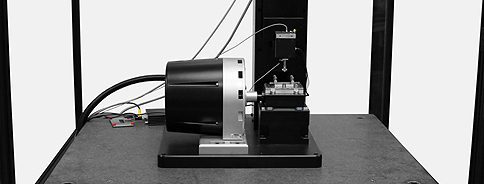
High Speed Nanotribology Testing Breakthrough
Feb 21, 2013 – Irvine, CA – Nanovea announced today the completion of a Nanotribology System capable of speeds as high as 1400mm/sec. The unique length of stroke, up to 10mm, combined with a linear movement at a rate up to 70Hz, and possibly at higher frequencies, allows speeds never before available for Nano Wear Testing.
Wear testing instruments have existed for more than half a century. From the beginning, testing loads were typically higher than 1N and speeds were slow except in more recent fretting applications where displacement would be limited to 10’s of microns. Then Nanoindentation first appeared in the late 80’s with the capability to provide much lower loads. The first systems were, and still are in majority, based on a coil system with no feedback control loop. Feedback control loop is essential to provide superior load control when the position of contact is moved such as that required for scratch or wear testing. Nano Scratch Testing with piezo load cell combination appeared in the late 90’s. The first systems used cantilever technologies that gave sufficient speed to the feedback control during scratch and wear testing but the speed of displacement was, and still is limited to below 10mm/sec. For many applications the service life require a very high number of cycles to ensure that the device will hold up after years of use. At the slow speed available with cantilever technologies it could take more than 6 months to accomplish a single wear test. This is impractical and clearly slows down development and approval of new technology.
Nanovea is able to attain faster speeds and secure control of the loads during Nano Wear Testing by using a coil speaker system for quick and smooth displacement. Adding the use of the Nanovea Nano Module with a piezo actuator and an ultra-sensitive load cell creates a quick load control with vertical mounting to ensure superior response to speed.
“We were given the opportunity to really prove our team’s capability here with this project. We are very proud of this achievement. This new technology will speed up the introduction of new devices with increased service life to the customer market.” –CEO, Pierre Leroux
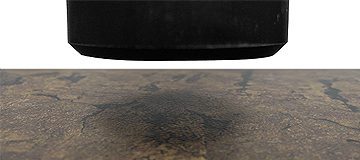
Texture Consistency Measurement Using 3D Profilometry
In this application the Nanovea ST400 Profilometer is used to measure the texture consistency of linoleum flooring. The intended surface texture here should be a repetitive structure with the same relative size. Measuring a small area should show how consistent this texture is being produced.
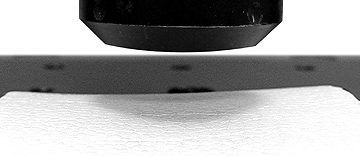
Surface Boundary Measurement Using 3D Profilometry
In this application the Nanovea ST400 Profilometer is used for surface boundary measurement of Styrofoam. Boundaries were established by combining a reflected intensity file along with the topography, which are simultaneously acquired using the Profilometer. This data was then used to calculate different shape and size information of each Styrofoam “grain”.
Here are examples of materials we tested this month:
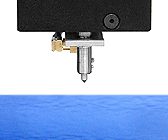
Mechanical:
• Nanoindentation dma of soft polymer
• Nanoindentation fracture of micro ceramic parts
• Nanoscratch of medical coatings
• Nanofriction of catheter
• Microindentation multi cycle of alloy samples
• Microscratch of dlc coating
• Microscratch of ptfe coating
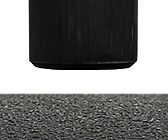
3D Non-Contact Profilometry:
• Volume loss of abraded silica
• Topography of various spray coatings
• Roughness engine parts
• Roughness of ti coatings
• Texture of molded plastic surfaces
• Thickness of transparent plastics
• Wear rate of polished concrete coating
• Wear & friction of ptfe coating
• Wear rate of ti coatings
Here are examples of materials we tested this month:

Mechanical:
• Nanoindentation hardness of micro bumps
• Nanoscratch of micro rod
• Nanowear of polymer coated glass
• Microindentation dental material fracture toughness
• Microindentation compression of granules
• Microscratch thermal spray coating

3D Non-Contact Profilometry:
• Roughness of micro machined parts
• Finish of paint samples
• Texture of molded surface
• Profile of ceramic edge
• Dimensions of glass cover
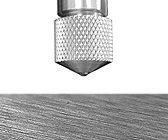
Tribology:
• Wear testing of lubricated medical polymer
• Wear testing of medical metal samples
• Friction testing of polymer coated glass
Here are examples of materials we tested this month:

Mechanical:
• Nanoindentation hardness of gold films
• Nanoscratch of coated wire
• Nanoscratch of hard composite
• Microindentation yield strength of machined parts
• Microindentation mapping of welds
• Microscratch of TiCN coatings

3D Non-Contact Profilometry:
• Roughness of steel coupons
• Texture of machined cuts
• Flatness of glass parts
• Coplanarity of micro features
• Step Height of ceramic micro parts
• Topography measurement of laser texturing
• Thickness of transparent films

Tribology:
• Wear testing of TiCN coatings
• Wear testing of flooring samples
• Friction testing of EPC coatings with lubrication
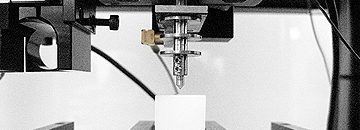
Nanoindentation of Polymer at Elevated Temperature
In this application, the Nanovea Mechanical Tester, in Nanoindentation mode with a temperature heating plate ( up to 120°C ) is used to study the comparative Polymer Hardness, Polymer Young’s Modulus and Polymer Creep analysis properties between High Density Polyethylene (HDPE) and Low Density Polyethylene (LDPE). The temperature was measured directly on the surface of the polymer with a thermocouple.
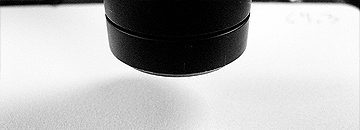
Surface Roughness Statistical Analysis Using 3D Profilometry
In this application the Nanovea ST400 Profilometer is used to measure over 30 coupons with similar surface features with only slight differences. The surfaces were analyzed for parameters such as surface roughness, maximum height, maximum peak height and root mean square. A statistical analysis was then performed using histograms, tables, control charts, box plots and
scatter plots.
Surface Roughness Statistical Analysis Using 3D Profilometry
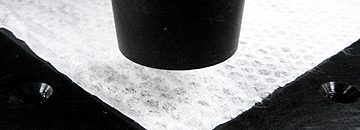
Fabric Surface Area Measurement Using 3D Profilometry
In this application the Nanovea ST400 Profilometer was used for surface area measurement of a fabric surface to determine amount of projected and developed surface areas as well as a contour analysis of the texture on the surface.
Here are examples of materials we tested this month:

Mechanical:
• Nanoindentation hardness of epoxy coatings
• Nanoindentation hardness of silicone coatings
• Nanoscratch of silicone coatings
• Nanoscratch failure of stent coatings
• Nanowear friction of capillary tubes
• Microindentation compression of micro features
• Microindentation fracture of micro ceramics

3D Non-Contact Profilometry:
• Roughness of mini turbines
• Roughness of films
• Texture of hard rubber samples
• Flatness of plastic molds
• Flatness of seal
• Depth & Area of micro channels
• Topography of oxidized samples
• Dimension of micro aerospace parts

Tribology:
• Friction testing various lubrications on steel
• Wear testing various hard coatings









